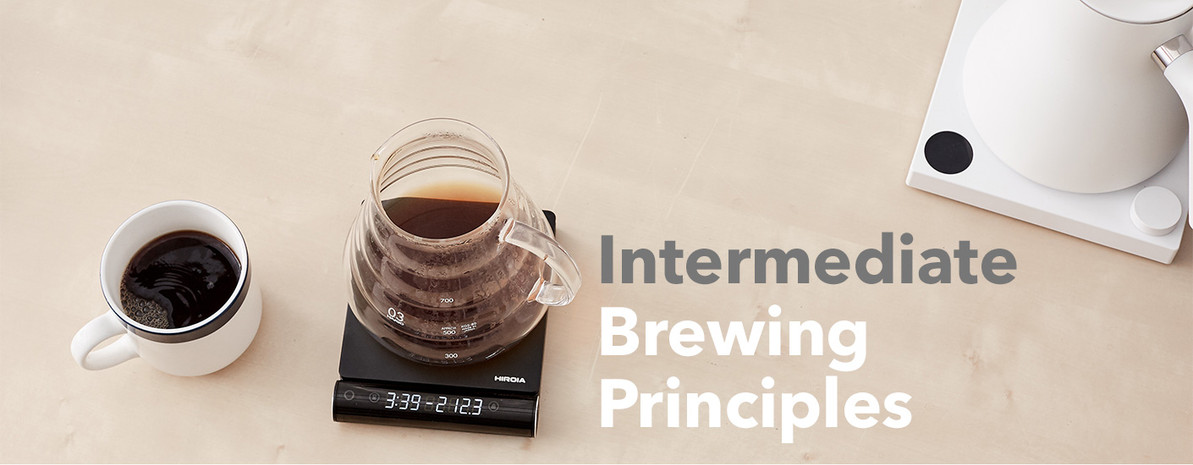Intermediate Coffee Brewing Principles
A dive into the science of coffee brewing, looking at coffee extraction, the impact of brew strength, and how you can influence those to produce delicious coffee time and time again.
Making good coffee consistently seems easy enough—good roasted coffee, good water, and a good recipe will produce a good brew almost always. But what about great coffee? The kind of brew that sticks with you through an entire day. The kind of brew that you fall asleep thinking about. The kind of brew that leaves you feeling like an all-powerful coffeemancer. Well, achieving that level of mastery takes a little deeper understanding of what really happens in your brewer.
If you haven’t yet, take a look at our Basic Brewing Principles where we lay out the fundamentals of good coffee, good water, and good recipes; this article is going to be a dive into the bigger concepts of turning beans to brews. Read on for our primer on extraction, strength, and how to control major brewing variables to modulate the flavors in your cup as you pursue the ultimate goal of the perfect mug of coffee.
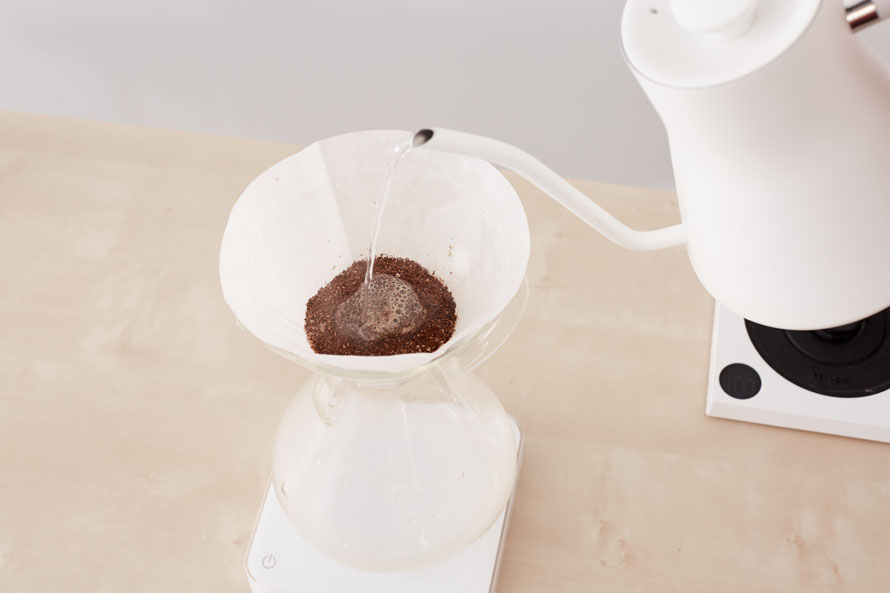
The Truth About Brewing
To get a little technical, the process of brewing coffee is really the process of extraction. When you add water to ground coffee the water first washes away insoluble compounds (oils and superfine coffee particles) from the surface of your coffee grounds and begins extracting the most easily dissolved soluble compounds. Once the coffee particles become saturated the real bulk of the extraction takes place, during which water dissolves the majority of the extractable compounds (only ~30% of roasted coffee’s mass is water soluble) available in a dose of coffee. Finally, given enough time and temperature, water works through hydrolysis to break some initially insoluble compounds into smaller components which are more readily extractable. As each step in this extraction happens water is trapping and keeping all of these extracted compounds in solution, resulting in our brewed coffee! Those insoluble compounds washed from the surface of the coffee particles will help create the texture and body of your coffee, while soluble compounds now in solution will make up the flavor of your beverage.
The chemical composition of a cup of coffee changes constantly throughout the brewing process as different chemical compounds (like organic acids, simple sugars, and more complex carbohydrates) all dissolve at different and predictable rates; the first few drips out of a pour-over brewer for example will be highly concentrated, excessively rich, and full of organic acid content, while the end of your brew will be dilute, bitter, and contain difficult-to-dissolve compounds (like those more complex carbohydrates) that require ample time and temperature to dissolve. This means that we get to control what our brewed coffee tastes like by controlling the amount of extraction we achieve—also, the predictability of the rate and order in which these flavors dissolve means that we have a way to taste and assess whether a brew is under-extracted (we removed too little of the soluble material), over-extracted (we removed too much of the soluble material), or ideally extracted (we removed just the right amount of the soluble material).
How to Judge Your Extraction
Though the standards for a good extraction are defined pretty specifically by the Specialty Coffee Association, those numbers don’t mean a lot to most home brewers (or really to most professional baristas either). To measure your extraction accurately and efficiently you would need specialized tools and calculations, and most pros will tell you that good numbers don’t always translate to good flavors anyway. So, if flavor is defined by the level of extraction we reach, how do we know if our brew is over-extracted, under-extracted, or just right? By taste! We’re able to approximate our relative extraction by using a few guideline flavors that can be readily tasted in brewed coffee.
Under-extracted coffee will likely taste sour, salty, or overbearingly acidic. The early stage of extraction contains most all of the acids that will be extracted, as well as some alkaline compounds (e.g. caffeine) that are bitter and unpleasant when left unbalanced by other flavors that can be extracted later in the brew.
Over-extracted coffee will likely taste bitter, weak, and feel unpleasantly astringent. Many of the flavors extracted late in a brew are bitter in taste, pushing the flavor balance in that direction quickly. Also, there’s very little extractable material in ground coffee late in the brewing process, so the liquid coffee flowing out of your brewer at this point will be thin and dilute, contributing to the lower strength of an over-extracted brew.
Ideally extracted coffee should be balanced and flavorful, with satisfying texture and an acidity that complements the flavors of your brew. This can mean sweet and brimming with fruit flavors, deep and rich with chocolatey goodness, or complex and alluring with savory complexion.
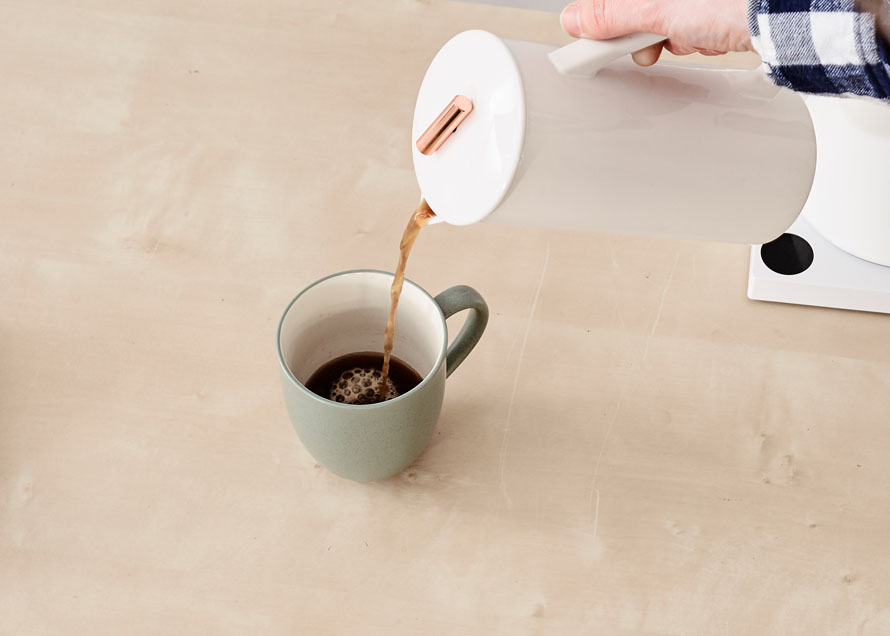
If you’re not a confident taster right now that’s totally okay! Tasting well is a skill you can learn, and with a little trial and error you’ll be able to start judging your extraction accurately enough to make educated decisions about how to adjust your recipe for a better brew.
The (major) Variables You Control
There are dozens of variables involved in producing a cup of coffee, and while they all have some influence on the resulting brew only a small handful of them affect any significant change to our extraction. Some of those “control” variables can be managed directly (brew ratio, or grind setting for example), while others are managed by doing your best to influence them (like grind uniformity, or temperature stability). Here we’ll briefly define what our important control variables in brewing are, and later we’ll cover how you can manipulate them to achieve the result you’re looking for!
Brew ratio: Your ratio of coffee to water is the crux of the recipe you use to brew. There are lots of recognized standards for this coffee:water ratio throughout the coffee world—60g/1L, 1g of coffee per 16ml of water, 2tbsp per 6 fl oz—and finding the one you like best will take some brewing, tasting, and time.
Grind: The measure of how coarse or fine your ground coffee is, and the consistency of particle sizes, are perhaps the most important variables when it comes to the rate and evenness of your extraction.
Temperature: Seemingly straightforward, temperature for brewing can get a little complicated. What’s important to remember is that the temperature of the water that makes contact with ground coffee, as well as the temperature of the slurry (the combination of coffee and water in the brewer), is more valuable information than the temperature of water in your kettle. This is the variable most subject to external influences—is the room chilly? Is your brewer made of ceramic, metal, something else? — so temperature can be difficult to learn to regulate.
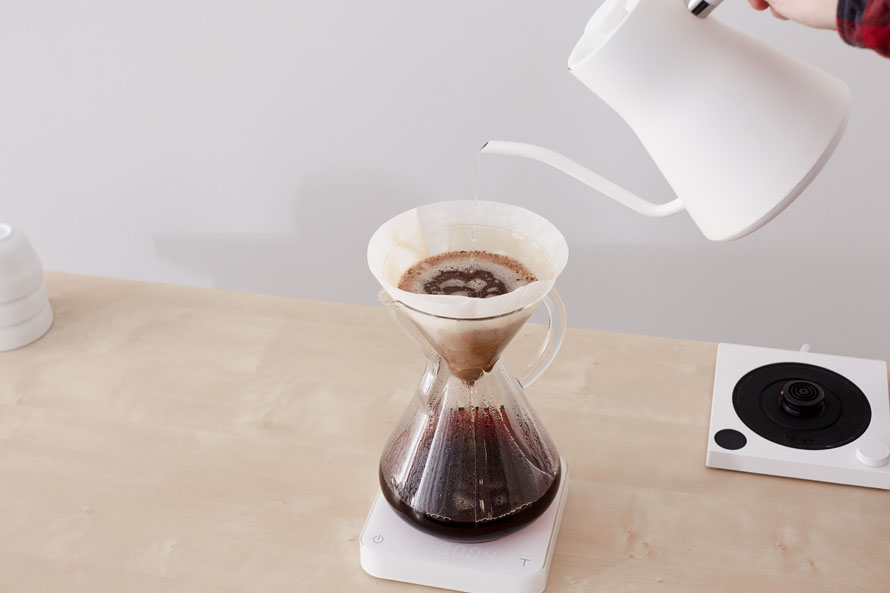
Time: The moment water makes contact with your ground coffee to the moment that all of the water and grounds are separated is your brew time. Depending on your brewing method this could be entirely independent from any other variable (like in a french press), or could be directly dependent on variables like grind size, temperature, and agitation.
Agitation: Any turbulence created as water moves over, around, and through a dose of coffee is considered agitation. This includes the flow of water due to gravity, the stirring of the slurry at any point during brewing, the application of pressure from a plunger, and any other physical force or disturbance that occurs.
The Importance of Strength
The human palate is fickle—too little flavor and our brain can’t be bothered to taste accurately, while too much flavor can leave our taste buds overloaded and uncooperative. A perfectly balanced extraction might be the primary goal in brewing, but having the right concentration of flavor in your mug is equally important for producing a wholly satisfying cup of joe. Strength, or the concentration of flavoring compounds in your mug, is measured quantitatively as a total dissolved solids percentage (TDS%). The Specialty Coffee Association has determined that 1.15–1.35% is the ideal concentration for brewed coffee, though most people don’t happen to have a refractometer just laying around. What’s important to know about strength is that it will determine how well we can taste our extraction; if the concentration is too weak you can expect flavors to be faint and watery, and if the concentration is too strong you can expect flavors to be muddy, overbearing, and harsh.
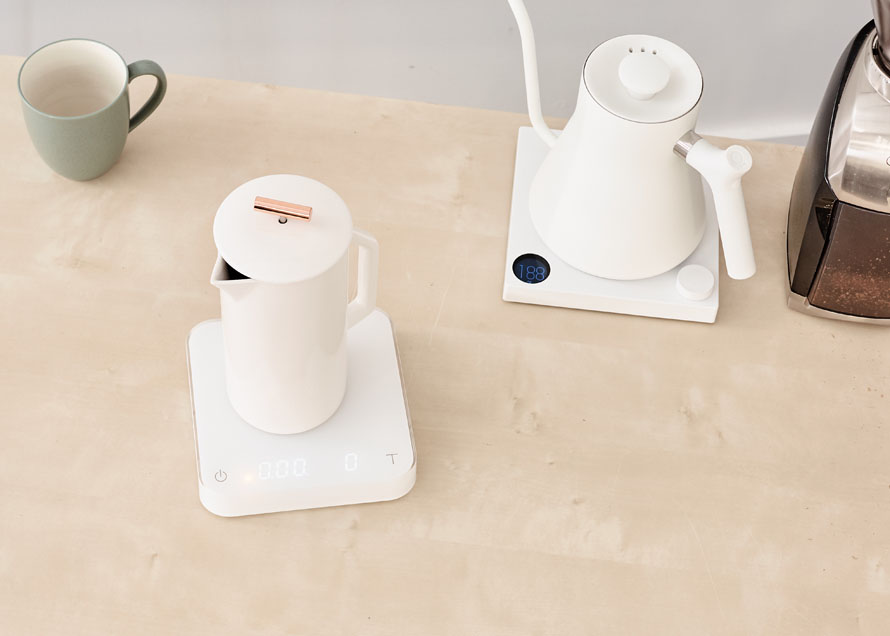
Controlling Your Brew
You know how to taste to your extraction, you know the important variables you control, and you know the importance of strength, but how do you put it all together to make good coffee? Learning to manipulate flavor is easier than you think! Each variable we’ve talked about can have a significant effect on a brew, and learning how they interact will help you become a master brewer quicker than you might think.
A note: As we talk about adjusting these variables we are also assuming that the other variables remain constant. So, when discussing grind size we assume the brew ratio remains the same, or when considering temperature from brew to brew we assume that the grind size is constant.
Brew Ratio will affect both extraction and strength significantly. The resulting extraction and strength will be inversely correlated in this case, meaning that the higher the extraction you achieve through your brew ratio the lower the total potential for strength becomes.
Manipulating this variable is fairly straightforward—the more brew water we use relative to a given coffee dose the higher the total extraction will be, and the potential for total strength will be reduced. This means a coffee brewed at a 1:15 ratio will have a lower extraction yield and higher total strength than the same coffee brewed at a 1:16 ratio.
The Grind setting that you choose will also have a significant impact on extraction yield and a lesser impact on potential for strength, but in this case the results will be directly correlated. As you grind whole coffee beans into smaller pieces for brewing you increase the total surface area available for water to extract coffee flavor, allowing extraction to happen more quickly as particles get smaller and smaller. This means that the finer your grind setting the greater your total extraction will be, and the greater your strength will be as well (and vice versa). The total effect on extraction will be much greater than on strength, but they will stay hand-in-hand in most cases.
An important consideration: You may not be able to affect grind setting without necessarily affecting your brew time as well. In any brewer where water has to flow through coffee grounds, like an auto-drip machine or pour over brewer, your brew time will generally increase as you grind finer. Separately, the proportion of fines and boulders (superfine coffee particles and large coffee particles outside of the standard deviation) can change dramatically as you adjust your grind setting. If your grinder is producing too many fines you can clog the pores in a coffee filter, “choking” the brew and resisting the flow of water through your ground coffee. Coffee acts as a flow restrictor in most brewing methods, so don’t be surprised if these two seemingly separate variables turn out to be inextricable.
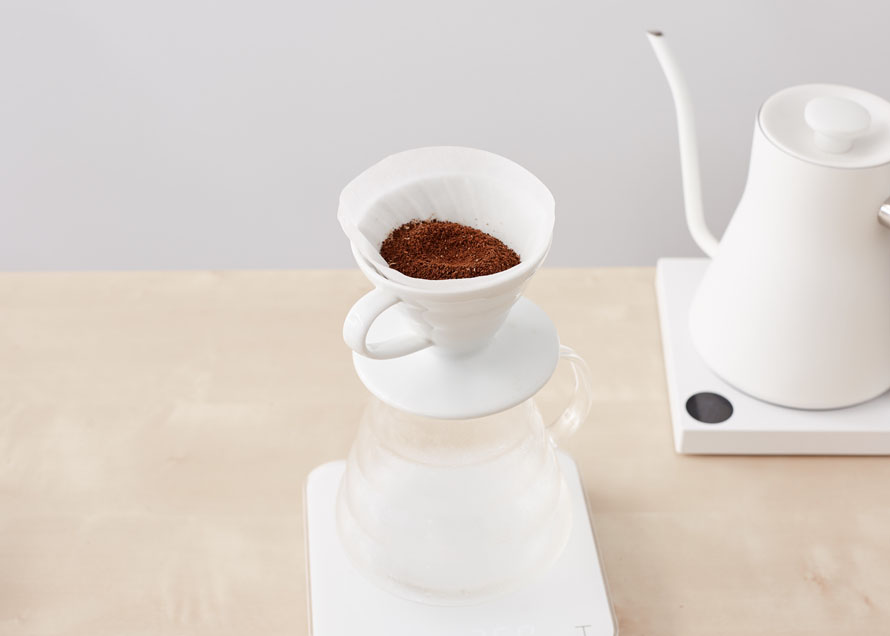
Temperature will relate directly to your rate of extraction, cooler water extracting slower and hotter water extracting faster. The brewing standards from the SCA say to use water 195°F–205°F (90.5°C–96°C) to brew hot coffee, though there are professionals who love to deviate from that standard in both directions. Generally you can expect lighter roasted coffees to benefit from higher brew temperatures, while darker roasted coffees will shine through cooler brewing.
While your total brew Time tends to be interrelated with a number of other variables in many brewers (most specifically brewing temperature and grind size) it’s a significant control point for a number of reasons. Always expect that more time means more total extraction, but perhaps more importantly we have to remember that different compounds extract at different and specific rates! This means that certain flavors necessary for a balanced and delicious cup of coffee will require a certain amount of time to extract, and oftentimes the compounds that give us those balanced flavors can’t be rushed. Always consider time an ingredient—too much of it and you end up with overblown flavors, too little and you get a weak and under-extracted brew.
Agitation is something of a wild card on this list. It’s not as controllable as the other variables we’ve covered, but you can do your best to create a standard for agitation in your brewing process. The height and speed of your pouring, any stirring or swirling of the brewer, or the pressure you apply to your Aeropress plunger could all be places to try to regulate your agitation. What’s important to know is that more agitation will increase your total extraction, while less agitation will decrease your total extraction; if you’re having a difficult time producing consistent results and you’re not sure why, this may be a variable to address in your process!
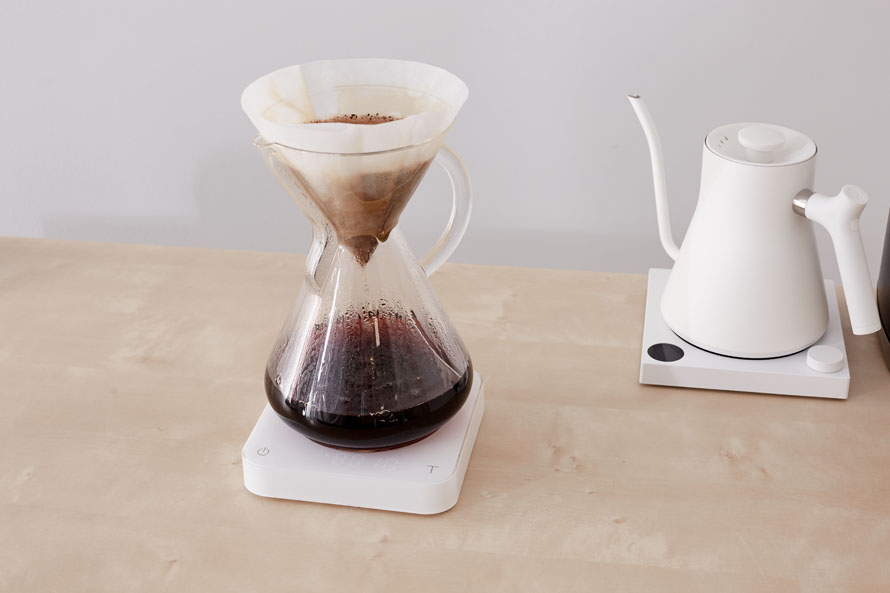
Get Brewing!
All of the reading in the world won’t make you a better brewer without spending time actually making and drinking coffee, so get to it! Try brewing the same coffee twice with one variable changed—brew ratio, grind setting, or temperature maybe—and taste them side by side. Remember that brewing is controllable and predictable, so don’t hesitate to write down your observations to reflect on later; this can be a great way to be thoughtful about the outcome of changing each variable, as well as a living document to record the coffees you’ve loved in the past and want to remember fondly. Understanding and mastering your ability to modulate the flavors in coffee will take time, experimentation, and lots and lots of tasting, but with some interest and just a little dedication you’ll be serving up beautifully balanced brews that most folks only ever dream of.
Happy brewing, y’all.
